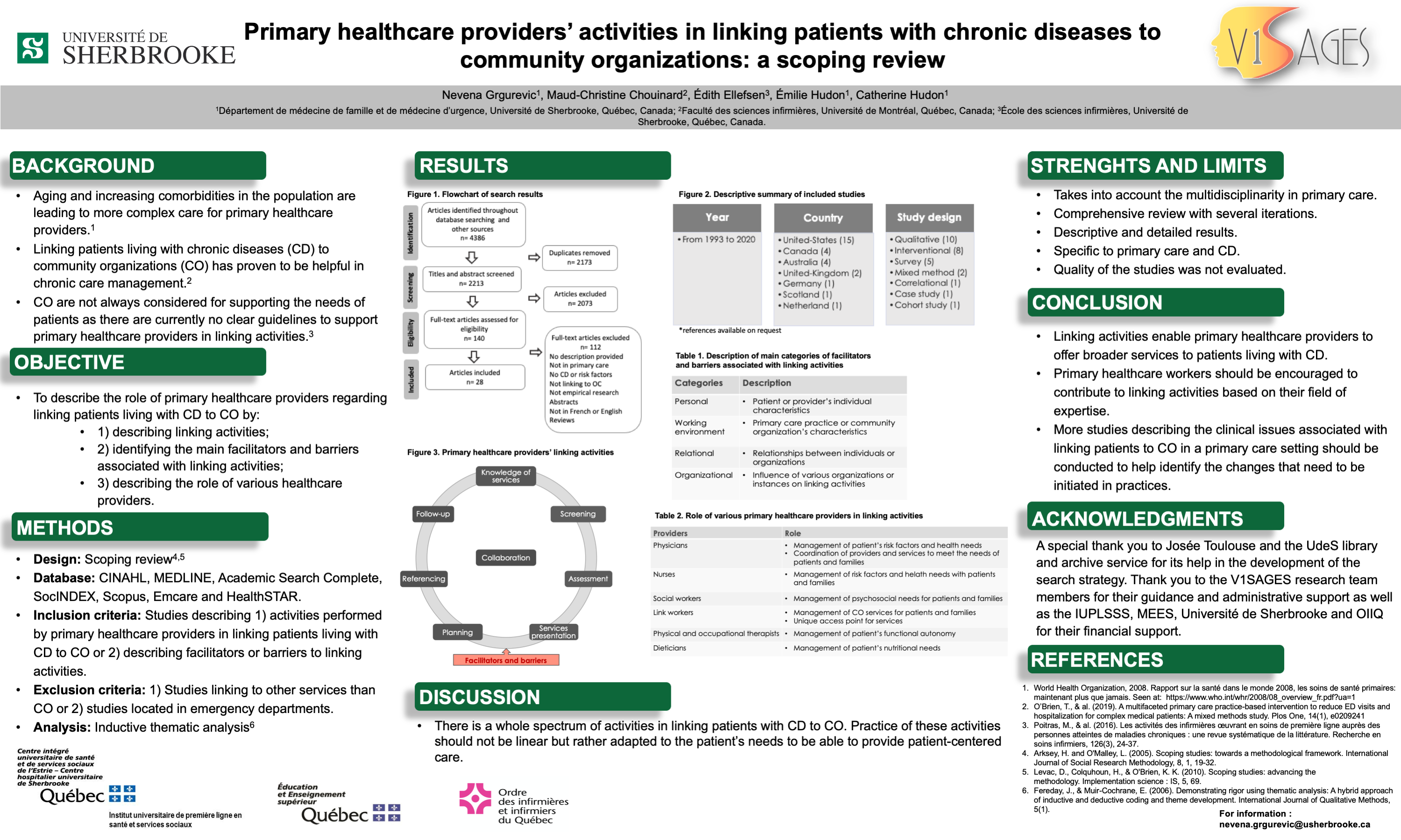PRP065: Primary healthcare providers’ activities in linking patients with chronic diseases to community organizations
Nevena Grgurevic, BSN; Edith Ellefsen, PhD; Maud-Christine Chouinard, PhD, RN; Catherine Hudon, MD, PhD
Abstract
Context: Aging and increasing comorbidities in the population are leading to more complex care for primary healthcare provider. External resources to the public health services, as community organizations, are not always considered for supporting the needs of patients. Linking patients living with chronic diseases to community organizations has proven to be helpful in chronic care management. Unfortunately, there are currently no clear guidelines to support primary healthcare providers in these activities. Objective: To describe the role of primary healthcare providers regarding linking patients living with chronic diseases to community organizations by 1) describing the linking activities, 2) identifying the main facilitators and barriers associated with the linking activities and 3) describing the role of various healthcare providers in a context of multidisciplinarity. Study Design: Scoping review. Dataset: Related keywords were used in seven databases (CINAHL, MEDLINE, Academic Search Complete, SocINDEX, Scopus, Emcare and HealthSTAR) to search relevant studies and 2208 articles were obtained after removing duplicates. After the initial screening, 135 full texts were assessed for eligibility by two reviewers. Study selection: Studies describing activities performed by primary healthcare providers in linking patients living with chronic diseases to community organizations or describing facilitators or barriers to linking activities were selected. Empirical studies were included and studies linking to other services than community organizations or located in emergency departments were excluded. In total, 28 studies were included in the scoping review. An inductive thematic analysis was performed to synthetize results. Results: Main linking activities are classified into 8 categories: 1) Knowledge of services; 2) Patient identification; 3) Assessment; 4) Education; 5) Planification; 6) Reference; 7) Follow-up; 8) Collaboration. Facilitators and barriers to these activities can be associated with: 1) Providers’ characteristics; 2) Patients’ characteristics; 3) Community organizations; 4) Primary care practice and; 5) Organizational structure. Healthcare providers’ implication should be adapted according to their field of practice. Conclusion: This scoping review presents a description of primary healthcare providers’ activities in linking patients living with chronic diseases to community organizations and their associated facilitators and barriers.

Catherine Hudon
catherine.hudon@usherbrooke.ca 11/20/2021Bravo Nevena! Bon NAPCRG : )